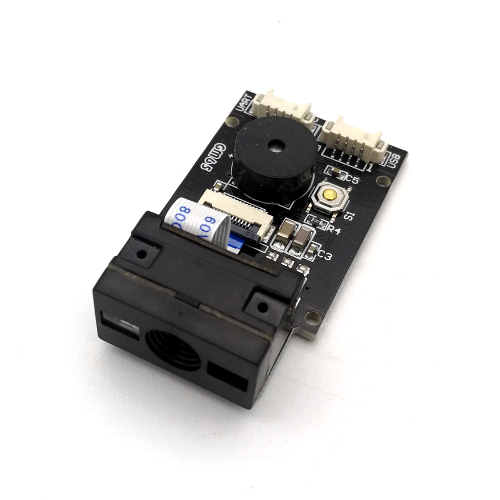
1D / 2D Barcode, QR Code Scanner - USB and UART interface, embedabble
Barcodes are not new, they have been around since forever and they are still relevant in this digital era. You can see 1D striped barcodes in almost all products in supermarket and 2D barcodes like the QR code, which can store more data are getting more popular in payment, advertising and ticketing. A barcode scanner decodes the black lines, squares and rectangles of a barcode and output it as readable characters.
This is a high performance barcode scanner that can read a wide variety of 1D and 2D barcode standards including the popular striped barcode and QR code whether they are printed on paper or displayed on screen. It is highly configurable and can bring benefits of barcodes to any projects such as kiosks, vending machine etc. Configuration is done by scanning setup QR codes as described in the user manual. There are tons of options for reading mode and output format that you can choose from. For example, you can set the scanning triggered by a button or automatic continuous scanning. You can also append a prefix or suffix to the data read. The settings are retained in the memory, so you do not have to set it all over again after power cycle.
Two types of host interface are supported, USB and UART. You can plug it in to a computer or boards like a Raspberry Pi, Tinker Board, etc. You will see it as a HID keyboard by default, no additional driver necessary. It means when you scan a barcode, you will see the output as if it is typed on a keyboard. To make the scanning more effective, there are 2 LEDs beside the main optical reader. One is a white LED. This provides illumination when reading so that the scanner is working even in dark environment. The other is a red collimation LED, that serves as a guiding beam for the optimum reading distance. There is also a small buzzer on board that gives you a sound indicator when the barcode is valid and read successfully.
This module is compact, low power and can be embedded easily to your project
Package content:
- Barcode scanner
- USB cable
- UART cable
Technical details:
- Optical system: CMOS
- Capture light source: 617nm LED
- Lighting source: 6500K LED
- Reading angle: Rotating 360 °, Deflection ± 60 °, Tilt ± 65°
- Scanning angle: 34 ° (horizontal), 26 ° (vertical)
- Minimum contrast: 30%
- Resolution: ≥ 0. 1mm (4mil)
- Reading code system 1D: UPC/EAN, UPC/EAN with supplementals, Bookland EAN, ISSN, UCC Coupon Extended Code, Code 128, GS1-128, ISBT 128, Code 39, Code 39 Full ASCII, Trioptic Code 39, Code 32, Code 93, Code 11, Matrix 2 of 5, Interleaved 2 of 5, Discrete 2 of 5, Codabar, MSI, Chinese 2 of 5, GS1 DataBar variants, Korean 3 of 5, ISBT Concat
- Reading code system 2D : QR Code , PDF417, Data Matrix
- Voltage: DC 5V
- Current: 120mA during scanning / 30mA during standby
- Interface: USB, UART
- Working temperature: Temperature: 0°C~50 °C
- Storage temperature: -40 °C ~ 70 °C
- Working humidity: 10% to 80%
- Ambient light: 0~86,000 lux
Useful document:
